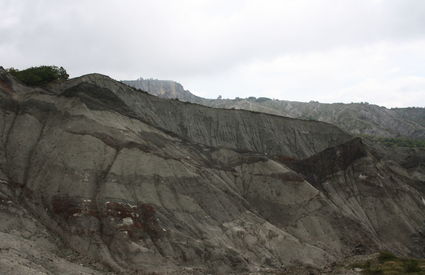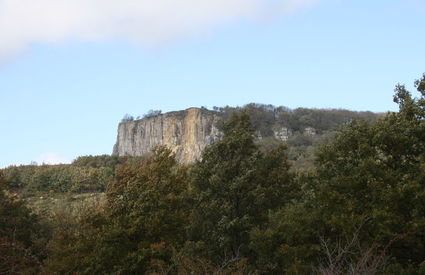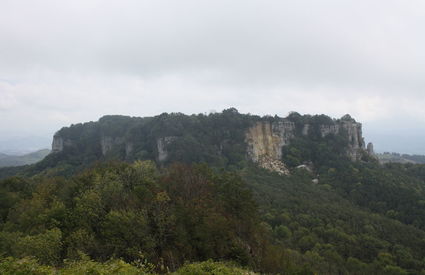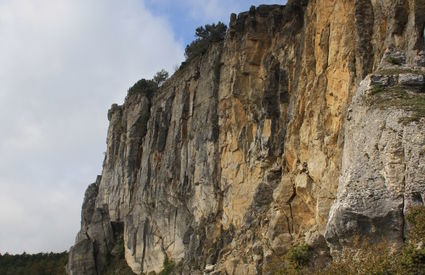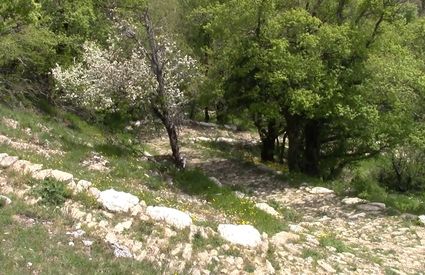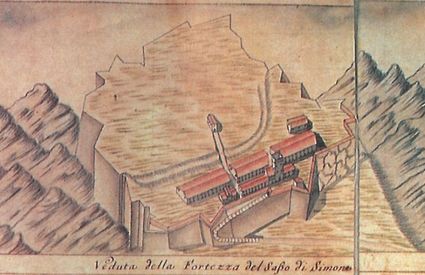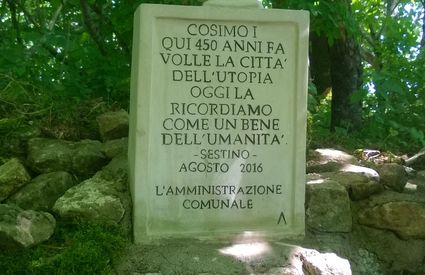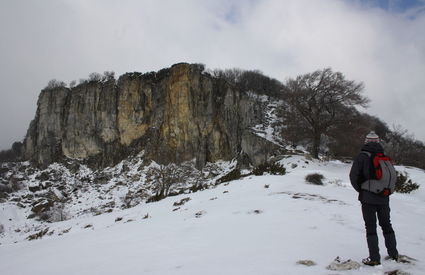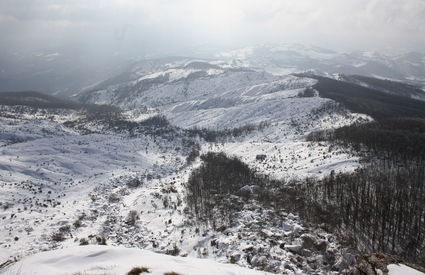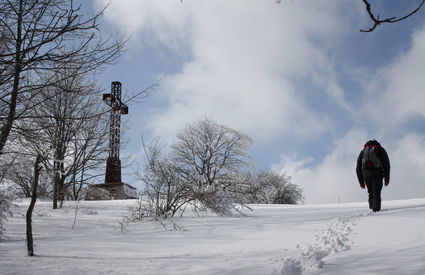Sestino
The “Sasso di Simone” and “Sun City”
A journey to discover the fortified city of Cosimo I de’ Medici
The “Sasso di Simone” and “Sun City”
A journey to discover the fortified city of Cosimo I de’ Medici
The Stone City – A dream, a utopia
The Sasso di Simone is absolutely shrouded in mystery; it’s a very special mountain that retains countless species of marine creatures within it. This is a testament to a past struggle: around four million years ago, the mountain was pushed by the Tyrrhenian waters toward the Po-Adriatic area.
To reach the top, a wind-swept plateau, climbers must take a long path hidden amid the woods, forever shifting with the lazy turning of the seasons. But when you’ve almost reached the end of the route, there’s a particular sense of anticipation that comes with nature’s resonances, once the path opens up and becomes a road, recalling the struggles of laborers of ages past.
There are other reminders: remnants of dry stone walls, square stones rising up from the roots of beech trees, almost prompt you to run for the final stretch. It’s right at this point that mystery triumphs! Although hidden from outside by the grass, by the branches of the trees, here you’ll see the remains of an ancient city, built according to very specific late Renaissance urban planning criteria. You find traces of this in the regulated intersecting of the walls, the rational division of spaces and the street segments that are still paved.
Amid mountains, forests and bandits: the fortified city
In the mid-1400s Malatesta Novello, a gentleman from Cesena and Sestino, aware of the place’s military potential as a natural fortress, decided to construct a castle there. Its importance was in its strategic functions, positioned as it was along the borders of the Sestino parish, of the duchy of Urbino, of Florentine territories and those of counts Giovanni and Ugo of Carpegna—not to mention the territory of the Church.
But strategy and policy don’t always go hand in hand: in 1465 the Malatesta lost the parish of Sestino, which immediately went back into the hands of the Church, and was then passed to the Florentines in 1520 in return for an unwavering payment on the part of Pope Leo X. This opened up a new and complex chapter in the Sasso di Simone’s history.
It’s believed that Cosimo I de' Medici began to consider the idea of building a powerful fortress at the top of the Sasso in the spring of 1554, during a visit to the Sestino magistrate. But in the period between the project’s birth and its conclusion, the Tuscan political situation had undergone so many changes that the importance and timeliness of the resolution was rather neutralized.
This unique confluence of events, along with a new climatic shift, which made the winters of the second half of the 1500s much harsher and longer, was one of the main reasons why the Sasso fortress (known also as The Sun City only experienced a brief period of economic and strategic vitality. It was for the same reason that, between the planning and operative phases, years passed, with many changes and cuts made to the initial project. What followed was a slow abandonment, highlighting the conflict between man and nature.


